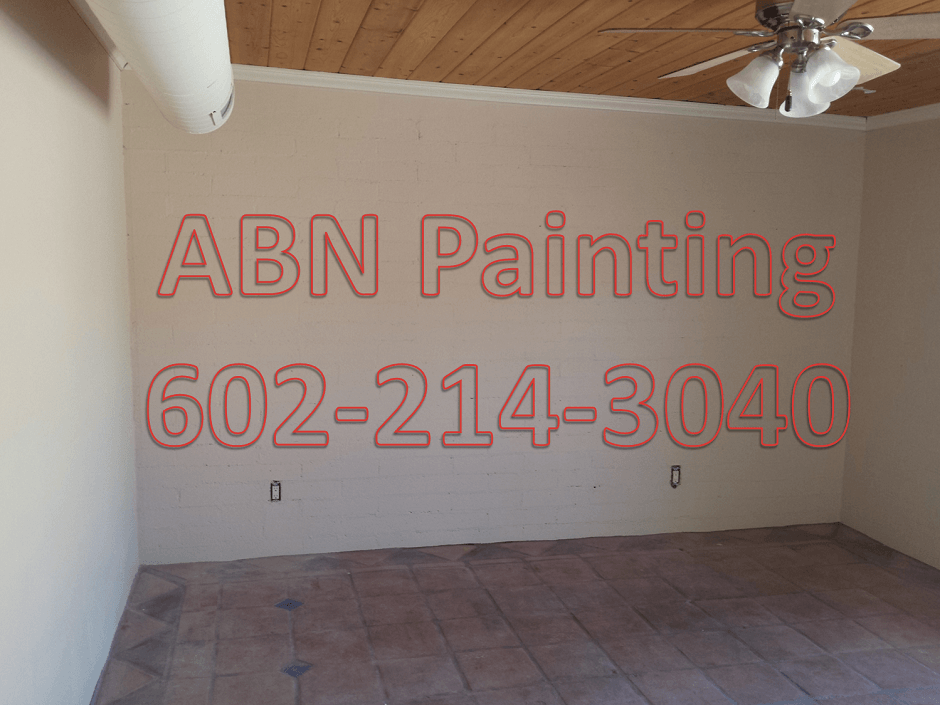
- Watch us on Youtube.
602-214-3040

602-214-3040
Brief overview of how to paint an interior of a house.
Most commonly used paints for interior.
Flat paint covers well all imperfections but most of the flat paints are non washable. The dirt will not come off the wall and you will need to touch up or repaint the area if it gets dirty. There are washable flat paints, but they are more expensive. Flat paints are usually used on the ceilings.
Eggshell doesn't hide the imperfections that well, but it is washable. Most of the interior walls are painted with eggshell. The higher the shine the easier it is for cleaning. Flat and eggshell finish paints are very easy to work with as you can apply this paint in any direction without leaving any brush or roller marks.
Semi-gloss and gloss are harder to apply, as you may need to keep a “wet edge” in order not to leave any brush marks. Those are more expensive paints as well. They are mostly used to paint kitchens, bathrooms, trim,doors and baseboards.
The sheen may vary from one store to another. Paint that is called eggshell in the Home Depot and does not have a lot of sheen, will be with higher gloss if purchased at Dunn Edwards store.
If you ask five different painting contractors for recommendation on what sheen is better to use, you will get five different answers. There is no industry standard for the interior painting sheen application. The most common sheen combination to see in Phoenix homes are: ceilings- flat paint; walls - eggshell finish; kitchens, bathrooms, laundry, doors, trim, baseboards - semi gloss finish. If the house is a rental, it is common to see one sheen to be used throughout the house.
Actual paint samples are vital for successful color selection.
A lot of times colors on the color pallet will look completely different from an actual sample of paint you get from the store.
People usually ask if color will look lighter or darker after paint applied on the walls and had time to dry. Sometimes it will look lighter, sometimes darker and sometimes just different.
Light is the main reason for that. Same color will look different in the sun light and electrical light. Same color will look different during different times of the day.
Paint pigments and other objects do not have the color in themselves. It is the properties of the pigment determine which wavelength it reflects to the eye and which one it absorbs. And the colors that we see is merely a length of the wave that the light reflecting from the object.
That is why after getting a general idea, looking at color scheme, which colors you like it is very important to get actual samples of paint of each color that you thinking of using, put it on the wall and make sure it is the color you want.
Some basic ideas about painting interior of a house with a roller.
On most of the interiors, painting with a roller preferred over spray painting. Spray painting would work on interiors better, if the house is unfurnished, it is a complete painting job (means doors, trim, ceilings, closets, baseboards included) and it is all one color. Or if there is a popcorn ceiling, it needs to be spray painted. In all other cases painting with a roller would be a better choice.
The fastest way to paint with a roller, if the large surface is painted one color, is to use a five gallon bucket, filled with paint in half and a roller grid. Prior to using a roller all the lines (corners, around windows,doors, lines between ceilings and walls,etc) need to be painted with a brush first. If you leave 3-4 inches strip of paint with a brush that should be enough not to leave marks on the ceilings, door trim and baseboards, when painting with a roller. If the strip of the paint that is left with a brush is too narrow, you will accidentally touch the areas that you not intending to paint(ceiling is the most common place to see the unintended roller marks left by beginner painter).
If glossy paint is used, the strips cut in with a brush, need to be overlapped before they get dry, in order to hide the lines between ares painted with a roller, and areas painted with a brush. It is called to keep a “wet edge”. That is why for beginner painters it is recommended to use paint with a low sheen.
Prior to rolling one needs to choose the roller cover that suits the surface. Most drywall in Arizona is textured, so the roller cover for rough surfaces would work well (sheep, or lamb skin is the best). The appropriate roller cover will allow you to paint at least 2-3 lines in the room 8 feet in height, without dipping the roller in paint. If you painted one line and roller cover already needs paint-you picked the wrong roller cover.
When starting to roll, it needs to be done from one corner of the room to the end of the wall. You start from the dry area and paint towards the wet area overlapping strokes.
First stroke on the wall should be upward, as pushing down on the roller full of paint may cause dripping. Paint lines need to be from the top of the ceiling to the very bottom, always keeping the even pressure. For that roller extension always need to be used . Painting only with roller handle will bring poor results. Only minimal pressure needs to be applied at all times. If roller cover is running out of paint, no need to apply pressure, trying to squeeze one extra line. It is time to deep the roller in paint again.
If the paint doesn't come off the roller cover easy it may be because the paint is too thick. Thinning down the paint with half a gallon of water on five gallon bucket may give better results. No need try to achieve perfection with a first coat. If paint is applied too thick it may ”run” and leave ugly marks. For most paint jobs two coats of paint will be needed (that is unless you are color matching an existing color). Most of the paints dry up pretty fast and second coat can be applied in 1-2 hours after the first coat. In closed up areas (bathrooms, laundry room) paint may take 3-4 hours to dry.
Prior to using a roller the best way to prepare for paint spills is to spread painter's plastic. Run 1.5 inch painter's tape along the baseboards and tuck in the plastic under.
Mistakes homeowners make when painting an interior without the help of professional painters.
One of the common mistakes that home owners make, when painting interior of a house without hiring painters, is either paying too much for the paint or too little, and not spending enough money on quality tools (brushes, roller covers etc).
1. Spending too much or too little on paint.
When choosing the paint for the interior there is no need to spend more than $20 per gallon. Usually Behr(Home Depot paint) falls into $20 category. Glidden $17(Home Depot) another paint that can work just fine for interior painting. When you go to a retail store to buy paint and not sure exactly what brand, type and price range you are looking for, and ask store employee to help you with the choice, most often you will be shown paints that are on expensive side. That is how store employees are trained, and they are just doing their job of selling you the most expensive paint. But even above mentioned (Glidden and Behr) inexpensive paints on interior walls will last almost indefinitely.
However, if you buy the paint that is too cheep, it may not cover well and you will have to apply 3-4 coats of paint where it normally would require only two coats. Cheep paint may also not look as good as a better quality paint would, when applied on the walls. And it would be not as easy to clean as decent quality paints. A five gallon bucket of maintenance paint from Wal mart, with a price of $40 would be a good example of the paint to stay away from.
2. Not buying a good quuality paint brush.
When choosing the brush, no need try to save money here. Cheep brushes are very hard to work with. They don't hold enough paint and always impossible to paint a straight line with, even if you are a pro. Quality brush price tag is about $17 for 3 inch brush. “Purdy” is the brand name synonymous with quality brushes.
3. Not spending enough money on a roller cover.
Quality roller cover is never sold in packs of 3 or 6. It always comes as a single item at a price of around $10. The best are “sheep skin” or “ lamb skin”. They come in different thickness and the choice will depend on the roughness of the surface you need to paint. Cheep roller covers don't hold enough paint to cover even one line from the top of the ceiling, to the floor of a room 8ft in height. With quality roller cover, you can paint 2-3 lines before you have to dip your roller in paint again.
4. Using a roller as a first step in painting process.
Another mistake is painting with a roller as a first step of a painting job. First, all painting needs to be done with a brush.
1 Lines between the ceiling and the wall.
2 Around the outlets and window jams.
3 Around the trim of the doors, baseboards and corners of the room.
4 And the last step is to apply paint with a roller on the areas in between.
This sequence will help to avoid lines between the areas painted with a brush and areas painted with a roller.
5. Using paint sheen that is too glossy.
Buying the paint that is too glossy. If it is your first time painting project, flat paint (or eggshell) is the best choice, as it will leave little or no brush marks. Semi-gloss or full gloss requires maintaining a constant “wet edge”. Those two sometimes can be tricky to apply even for a professional painter.
6. Cutting a straight line using tape.
Trying to paint a straight line between the ceiling and the walls using tape. While doing so on the smooth surface may come out ok, most of the drywall in Arizona is textured. No matter how hard you press the tape against the ceiling, the paint will “bleed” through. That is why all the lines between the ceiling and the walls are needed to be done by hand without using any tape.
7. Hoping to finish the job in one coat.
Being disappointed after first coat did not come out perfect and thinking something went wrong. First coats are almost never perfect and 95% of all painting jobs will require second coat.
Painting a room.
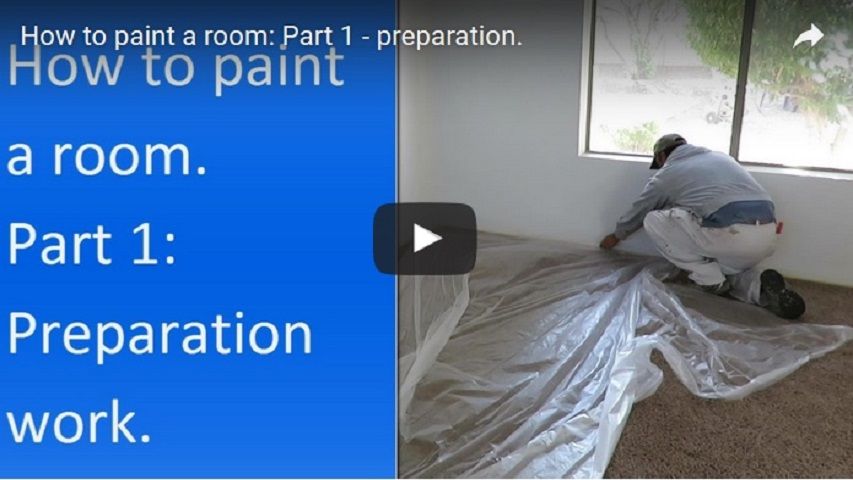
Can paint be eco-friendly?
Some people wonder if using paints that have low or zero VOC (volatile organic compounds) helps to preserve the environment and less harmful to a person, who is living in the house being painted, than regular paint.
As far as environment goes, paint itself ends up on the walls and does not cause huge environmental impact on this planet. The damage to environment is done not through the paint itself (although the paint doesn't do any good to environment either) but through the left overs: plastic, that was covering the driveway or the pool deck from paint over spray, the empty paint buckets, that are made of plastic, the masking paper, the tape. It will take a very long time in the local landfill to decompose for all those things. It is easy to tell when a painter just finished a complete paint job of an average size house. His truck is full of garbage bags, filled with trash. Regardless of type of paint that is being used the amount of trash, that will end up in the landfill will be exactly the same. It sounds good somewhere in advertisement “ We use eco-friendly paints” but in real life there is no currently a solution on how to paint a house and make it eco-friendly. Painting is always messy and it is never friendly to environment.
When painting interior of a house, using zero VOC paints can be helpful if the homeowner is present during the painting process and he has very sensitive nose, as these paints have very little smell. As far as long term effects, this paint would not make a huge difference on home owner's health. And it it is not because regular paints are friendly for a human being. The main reason for little impact on human health is this: there are so many hazards in a daily life of an average person that are far more harmful for a human health, than having conventional paints on one's walls. The things more harmful to a human would be: drinking coca-cola, eating fast food, having stress at work, you name it.
This paragraph was not written based on any studies. Nor it is written to discourage anyone from using “eco-friendly” paints. It is simply an opinion of one painting contractor.
It is good to remember that even the best interior house painters may not always be the best people to ask for a color advice.
Some home owners rely heavily on a painting contractor to give them a color advice. And there are probably some house painters that have an artistic eye, and are good at selecting colors. Many of the painting contractors are probably not the best in the role of interior color advisors. If a color advice is needed Dunn Edwards paint stores have color consultants on staff, that offer their services free of charge, to anyone who needs them. A home owner can take a digital picture of the area that is being painted, bring it to one of the Dunn Edwards stores on a flesh drive, and the color consultant will play around with different colors, showing on their computer how the room will possibly look with one color scheme or another.
Living room with an accent fire place before it was painted.
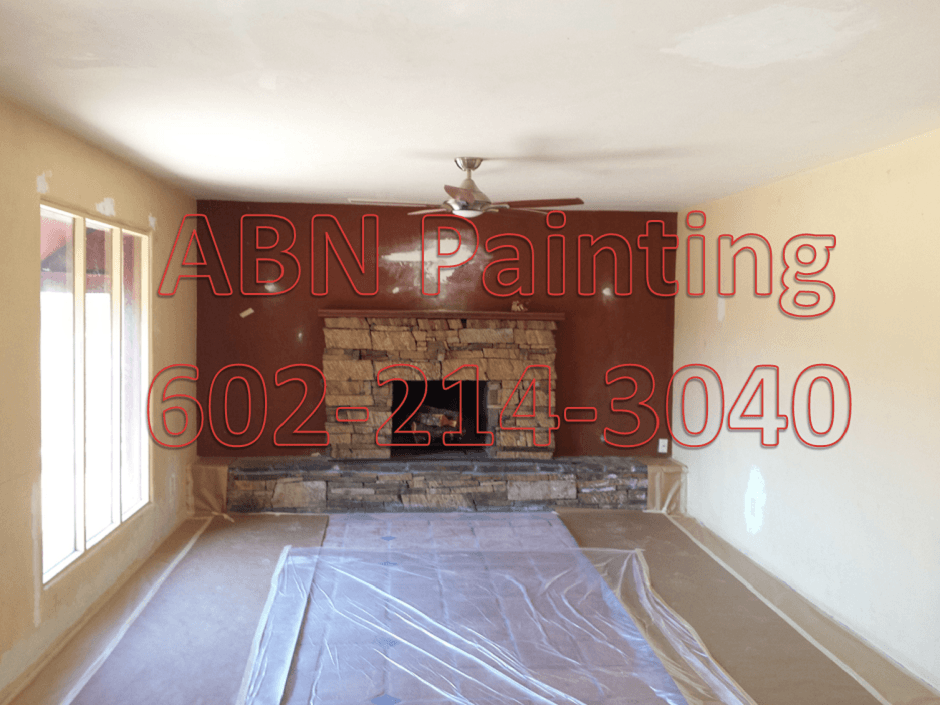
Living room with an accent fire place after it was painted
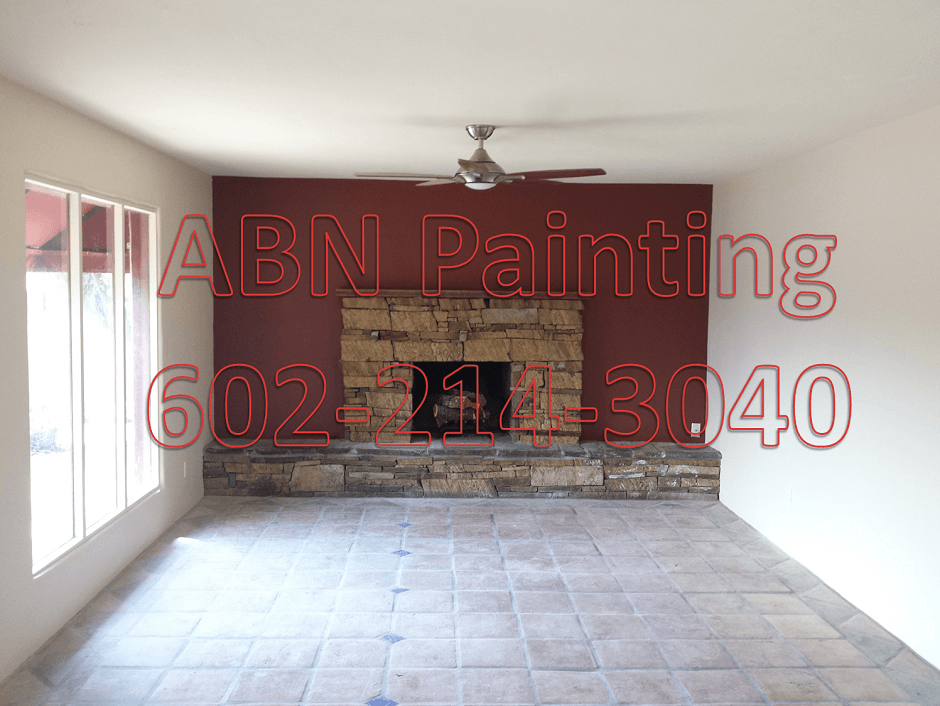
Small bedroom before it was painted.
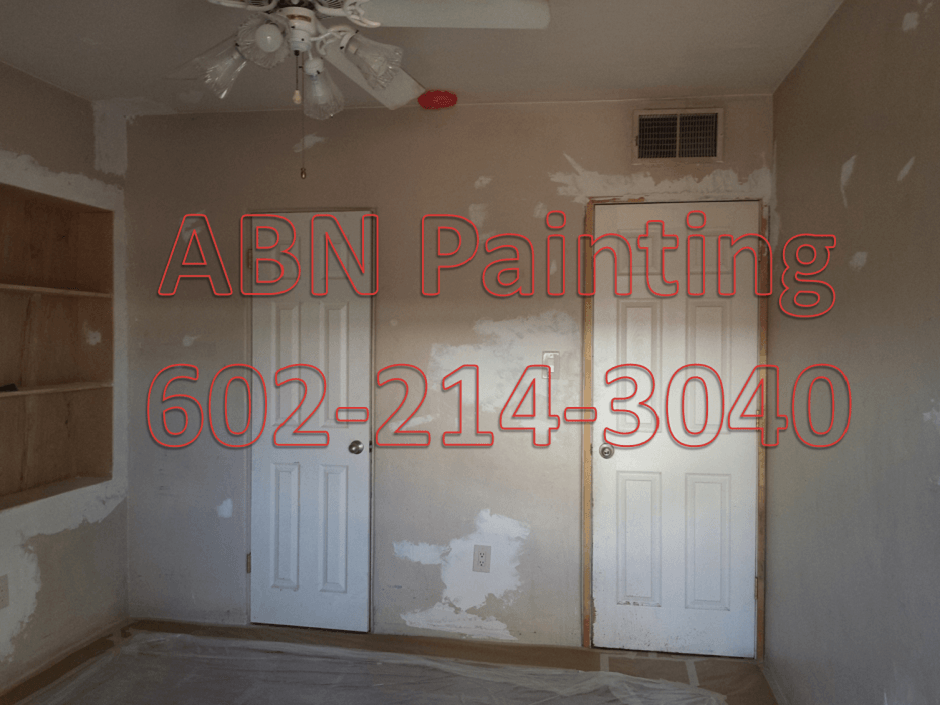
Small bedroom after it was painted
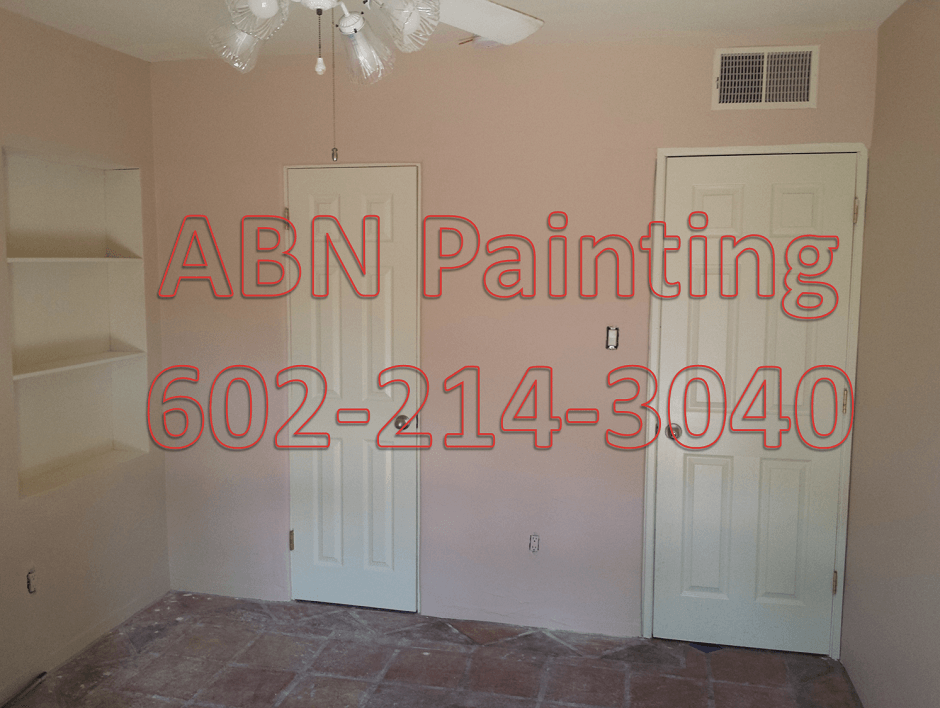
Bedroom before it was painted.
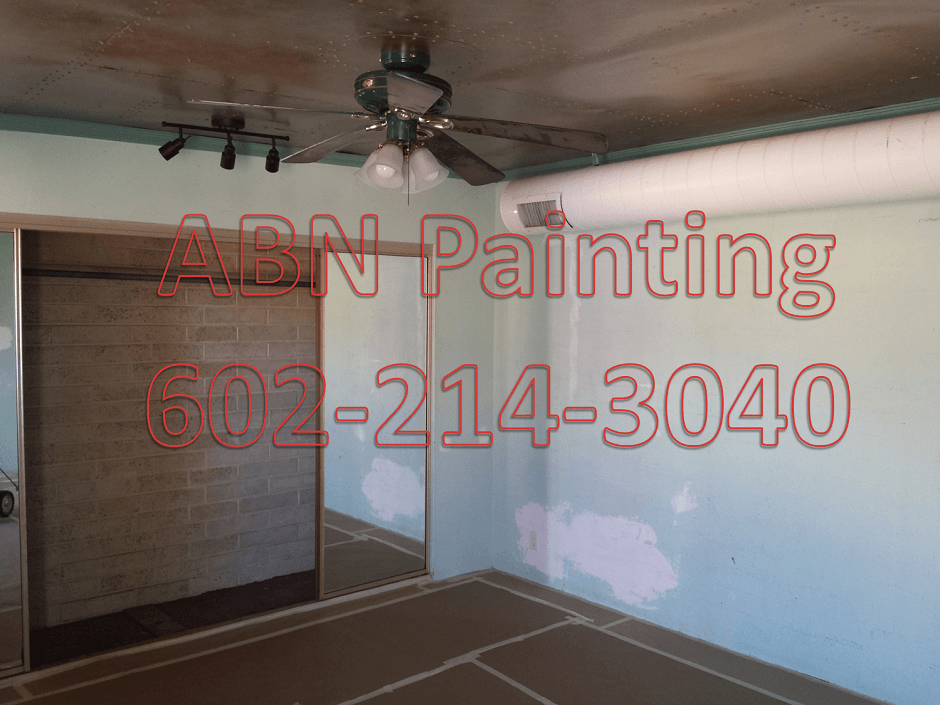
Bedroom after it was painted
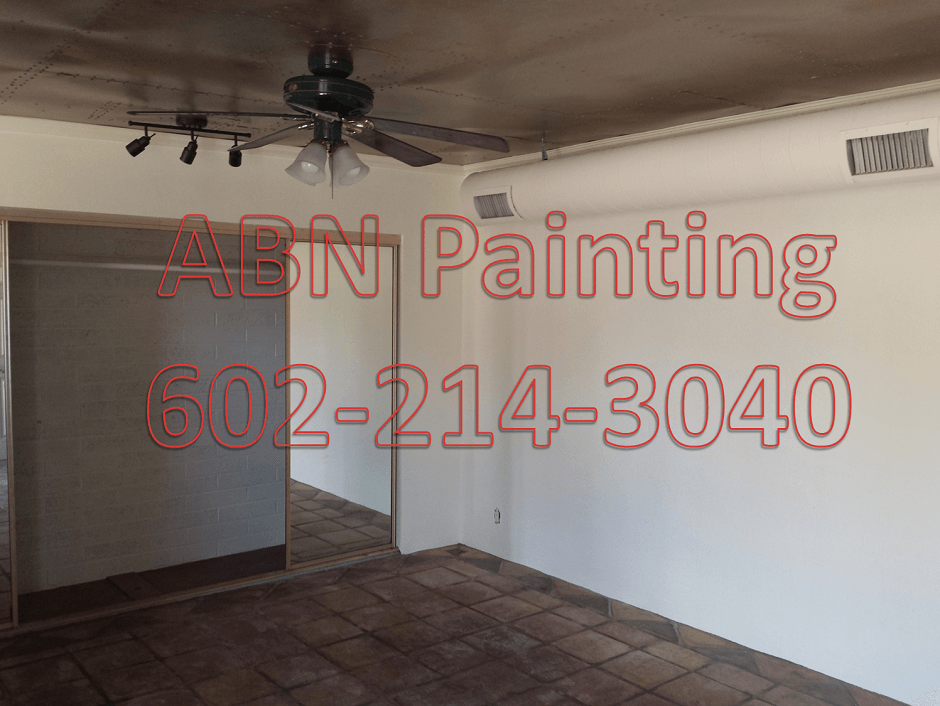
Bathroom before it was painted.
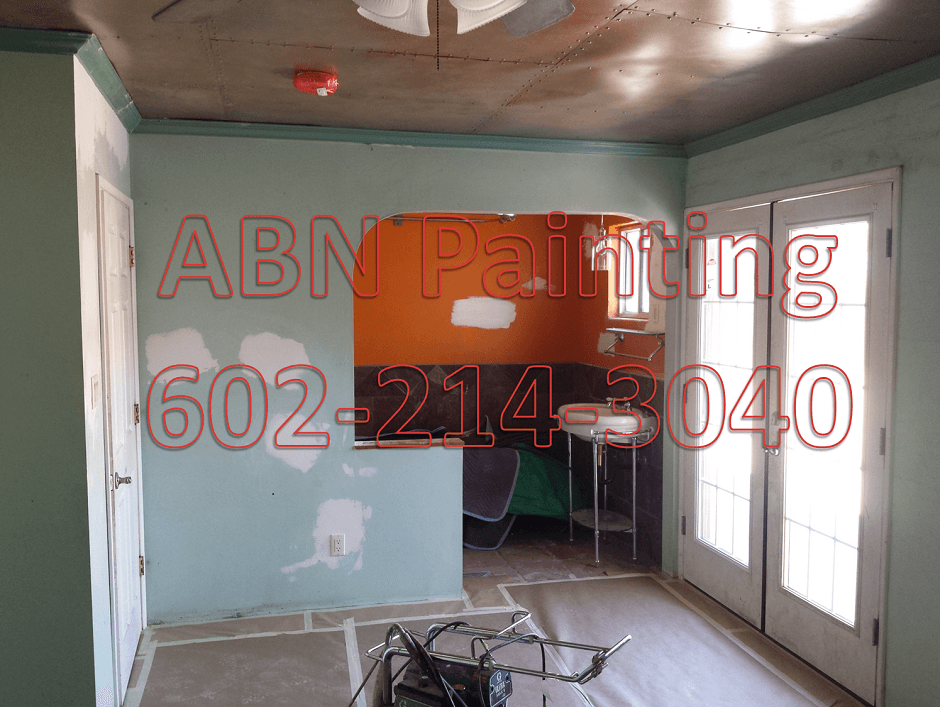
Bathroom after it was painted
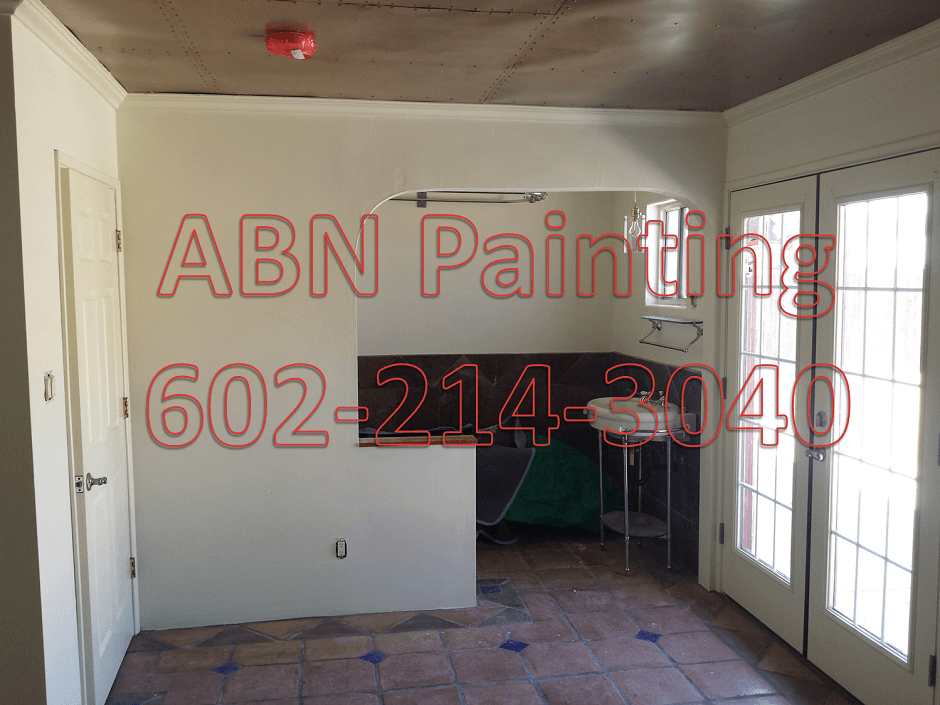
Bedroom before it was painted.
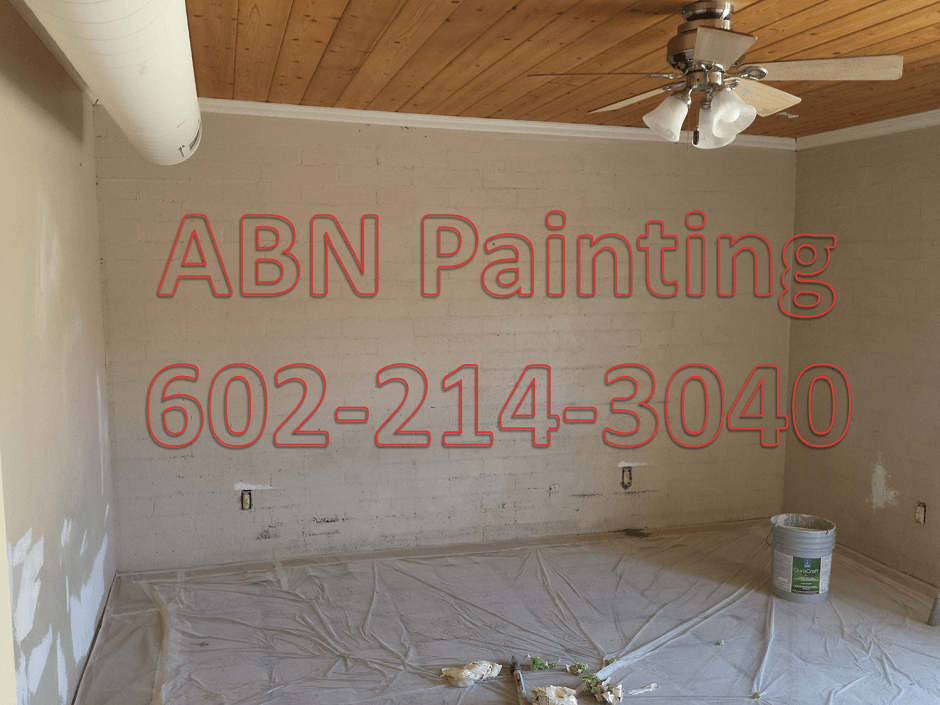
Bedroom after it was painted
